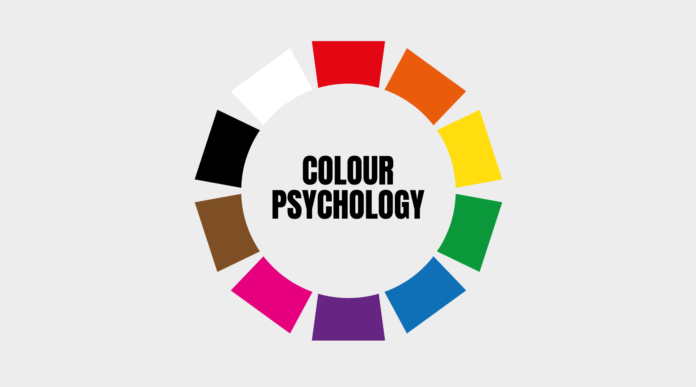Color is an immensely powerful tool in design, capable of evoking emotions, influencing behavior, and communicating ideas. This is where color psychology comes in, as it plays an instrumental role in design, from branding and marketing to product design and interior design. In this article, we will delve into the power of color in design and the various ways in which color psychology influences our daily lives.
The Intricacies of Color Psychology
Color psychology refers to the study of how colors affect human behavior, emotions, and perception. Different colors can evoke varied emotions and feelings, and even have the ability to influence our decision-making and behavior.
Here are some fundamental principles of color psychology:
- Red: Often associated with passion, energy, and excitement, red can also incite feelings of danger, anger, and aggression.
- Blue: Often associated with calmness, trust, and reliability, blue can also elicit feelings of sadness and melancholy.
- Green: Often associated with nature, growth, and health, green can also trigger feelings of envy and greed.
- Yellow: Often associated with happiness, warmth, and optimism, yellow can also induce feelings of caution and anxiety.
- Purple: Often associated with creativity, royalty, and luxury, purple can also provoke feelings of mystery and spirituality.
- Orange: Often associated with energy, enthusiasm, and warmth, orange can also evoke feelings of aggression and dominance.
- Black: Often associated with sophistication, elegance, and power, black can also incite feelings of mourning and sadness.
- White: Often associated with purity, cleanliness, and simplicity, white can also elicit feelings of emptiness and coldness.
How Color Psychology Influences Design
Color psychology is a vital element in design as it has the power to affect our emotions, behavior, and perception of products and spaces. Here are some ways in which color psychology influences design:
-
The Significance of Branding and Marketing
Color psychology plays a critical role in branding and marketing, as colors can evoke specific emotions and feelings that can influence consumer behavior. Brands frequently use colors strategically to establish a sense of identity and emotional connection with their audience. For instance, Coca-Cola uses red to create a sense of energy and excitement, while Apple uses white to create a sense of simplicity and sophistication.
-
The Relevance of Product Design
Color psychology can also impact product design, as colors can affect the user’s perception of the product’s quality, usability, and value. For example, a product that uses black and gold may be perceived as more luxurious and valuable, while a product that uses bright and bold colors may be perceived as more playful and fun.
-
The Importance of Interior Design
Color psychology plays a pivotal role in interior design, as colors can influence our mood and behavior in a given space. For instance, a room painted in calming shades of blue may create a sense of relaxation and tranquility, while a room painted in vibrant shades of orange may create a sense of energy and excitement.
-
The Influence of Web Design
Color psychology also influences web design, as colors can impact the user’s experience and behavior on a website. For example, a website that uses green may create a sense of trust and reliability, while a website that uses red may create a sense of urgency and action.
The Significance of Context
While color psychology can provide valuable insights into how colors affect human behavior and perception, it’s crucial to consider the context in which colors are used. Colors can be interpreted differently based on cultural background, personal experiences, and individual preferences.
For instance, in Western cultures, red is often associated with passion and energy, but in some Eastern cultures, it is associated with luck and prosperity. Similarly, blue is often associated with calmness and reliability in Western cultures, but in some Middle Eastern cultures, it is associated with mourning and sadness.
Therefore, designers need to take into account the cultural and personal context of their audience when selecting colors for their designs. Designers should also consider the context in which the design will be used, such as the lighting and surrounding colors in a space, as this can affect how the colors are perceived.
The Role of Color Theory in Design
Color theory, the study of how colors interact and blend with each other, is also a crucial aspect of design. Understanding color theory can help designers create harmonious and visually appealing color palettes that evoke the desired emotional response.
Here are some basic principles of color theory:
- Complementary colors: Complementary colors are opposite each other on the color wheel, such as red and green, or blue and orange. Using complementary colors can create a strong visual contrast that can be used to draw attention or create a sense of tension.
- Analogous colors: Analogous colors are next to each other on the color wheel, such as blue, green, and yellow. Using analogous colors can create a harmonious and cohesive color scheme that evokes a sense of tranquility.
- Monochromatic colors: Monochromatic colors are variations of a single color, such as light blue, medium blue, and dark blue. Using monochromatic colors can create a subtle and sophisticated color scheme that evokes a sense of simplicity and elegance.
Conclusion
Color psychology is an immensely powerful tool in design, with the ability to evoke emotions, influence behavior, and communicate ideas. Understanding how colors affect human behavior and perception can help designers create designs that resonate with their audience and evoke the desired emotional response.
However, it’s crucial to consider the context in which colors are used, such as cultural background, personal experiences, and individual preferences. Designers should also consider the context in which the design will be used, such as the lighting and surrounding colors in a space.
In addition, color theory can help designers create harmonious and visually appealing color palettes that evoke the desired emotional response. By considering both color psychology and color theory, designers can create designs that not only look great, but also evoke a meaningful emotional connection with their audience.
Google News | Telegram
















